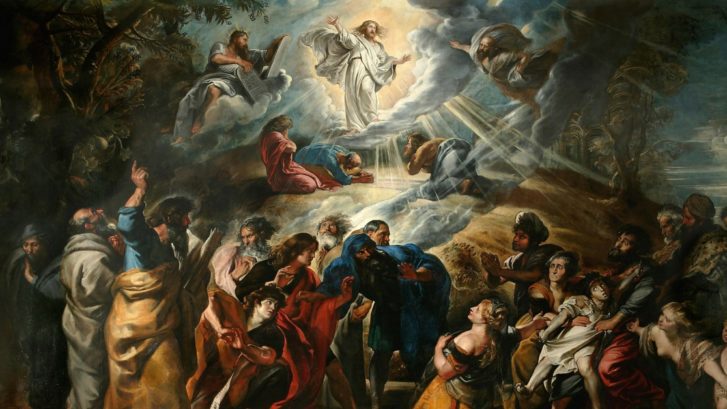This Gospel of the Transfiguration is so rich; there is so much for a homilist to talk about. For the first time, the apostles saw beyond and behind and within the man they had known for three years. Beyond the symbols and patterns of everyday life, there was something else, more to Him than they ever could have imagined
The question is that, after three years of witnessing Him raising the dead, curing the sick, and turning water into wine, what took them so long?
We often miss God’s actions in our lives, we are so busy. Society can put so much pressure on us to focus our vision, our energy, our drive solely on the pursuit of a career, or money, pursuit of a person, place or thing. And so we wind up giving these things such total devotion and priority that we become insensitive to deeper realities, blind to human needs, indifferent to the lives, joys, and needs of those around us.
Let me tell you a story. Journalist Kevin Carter was given permission to take photos of famine victims in drought-stricken Sudan in the 90’s. The camp was full, with thousands of starving people coming to be fed at the feeding center. Carter wandered outside of the camp into the open bush. There he heard a soft, high-pitched whimpering.
He found a tiny little girl crouched, head bowed, touching the ground, struggling to make her way into the camp, to the feeding center. Carter instantly got his camera ready, for here was a powerful picture. He started to photograph the child when dramatically a well-fed vulture, taller than the child, landed just a few feet behind her.
The bird was waiting to claim the child when she died. Kevin waited for about 30 minutes, hoping the vulture would do something like spread its wings for an even more dramatic image. It didn’t. After he took the pictures, he chased away the vulture
and watched while the child struggled toward the camp.
The picture first appeared in the New York Times in March of 1993, and Carter won a Pulitzer Prize for best picture of the year. He explained how he took the picture, waiting for the right light and for the bird to spread its wings. Then a storm broke – Carter was criticized for being so absorbed in his craft that he did not drop everything and rush that little child into the feeding center. Why did he wait so long, when a child’s life was on the line?
Two months after winning the Pulitzer, Carter committed suicide. He had not seen the child as a life that needed to be saved; he only saw a picture to be taken. He was obsessed with this work, determined, persistent, nothing would come before his photos. He once said, “Photography is my life.”
I do not know anyone who would act like Kevin Carter, no one sitting in this church.
But we could all ask ourselves a question, what controls my life? Is it lust for power, for recognition, for honor and glory? What makes you go? What makes you tick? Who or what rules your heart? Something does, or someone does, or here is a dreadful thought, perhaps, nothing does.
Kevin Carter was an addict to his photography. It ended up controlling his life. A sad and tragic event, but the whole incident becomes a parable about today’s gospel of the Transfiguration.
So many of us get sucked up into the tunnel vision of a totally demanding and absorbing job. The big career move, the spectacular deal, the salable moment, the right advantage. They are so absorbed in what advances them, they become blind to the needs of others. They simply do not see that there are times they should drop everything and hug their spouses or children, help their friends, or carry the starving child to the feeding center. Such insights, such transfigurations are not possible, because they are so focused on the immediate, the here and now.
They are like Peter, James, and John, not comprehending, not fully awake, wanting to build small huts, to stay there. And yet, weeks later they would all desert Him.
Lent was designed precisely as a time for us to wake up and examine our priorities
This gospel tells us we, too, might be missing something…..some transfiguring moments.


